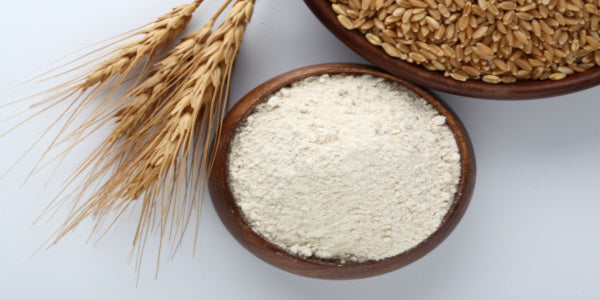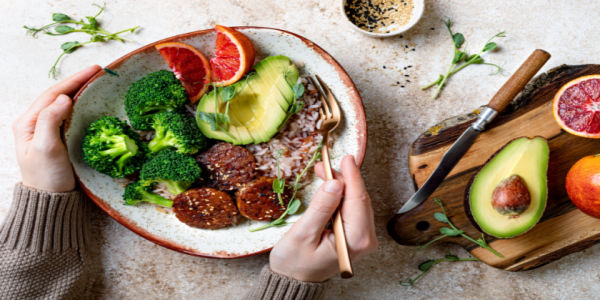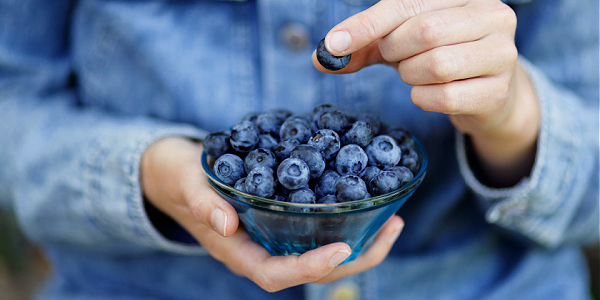
Is white rice healthy? Is brown rice healthier than white rice? Is rice good for you? Lately, rice has been called "bad" by the media but are the rumors true?
Keep reading to find out (from experts) if rice is healthy for you, which rice is healthier, and even more.
Is Rice Good For You?
Rice can absolutely be part of a healthy diet. Essentially, how "healthy" rice comes down to the way it is processed.
A rice kernel that has not been processed contains the following components:
• Bran - outer edible layer of a rice kernel that contains vitamins, minerals, oils, antioxidants, and proteins
• Endosperm - interior part of the kernel, mainly composed of starch (carbohydrate) and some other vitamins, minerals, and proteins
• Germ (embryo) - the innermost part of the kernel containing vitamins, minerals, antioxidants, and proteins
Which Rice Is Healthier?
There are thousands of rice varieties, so it is natural to wonder which one is the best. Each type of rice varies in color, length, aroma, and more. Among the top favorites are:
• Arborio
• Basmati rice
• Jasmine rice
• Long grain
• Short grain
• White rice
• Wild rice
Along with the different types of rice, there are different methods of processing and preparation. With thousands of options, it is no wonder things can get confusing.
When rice is processed, some of the layers (which include vitamins and minerals) are stripped away. Understanding the following processing terms can help you decide what kind of rice is best for you:
• Milled (refined or polished) - bran and germ are removed, leaving the starchy endosperm behind
• Parboiled (converted rice) - partially cooked and re-dried which helps reduce cooking time and increase shelf-life
• Raw - not parboiled
• Enriched - after refining, nutrients are added back in
Is Brown Rice Healthier than White Rice?
While whole grain is necessarily limited to one specific color, brown rice is a quintessential whole grain. It is a popular, healthy favorite that contains all three edible components found in rice (the bran, endosperm, and germ).
In contrast, white rice is a sort of refined grain. White rice is milled (refined and processed). Unfortunately, during the milling process, many nutrients are removed. Some of the vitamins and minerals contained in brown rice but not white rice include:
• B vitamins
• Phytochemicals
• Fiber
Is White Rice Healthy?
White rice often gets a bad wrap, but it can still be part of a healthy diet depending on how it is processed and prepared. Parboiling, in particular, is a processing technique that helps improve the nutrition content of white rice.
In many cases, after processing, some nutrients (like B vitamins and iron) are added back in. While this improves the nutrient content of the white rice, the nutrients added back in only make up a fraction of the amount found in rice originally.
Basically, brown rice is the best option if you are looking for the most nutrient-rich option but white rice is still more widely consumed. White rice is valued for its ease of cooking (takes less time to cook), palatability, and shelf-life.
5 Reasons To Enjoy Rice
Rice (yes, even white rice) can be a healthy addition to the diet! Here are five reasons to enjoy rice.
Rice is a global starch
Milled rice is a staple ingredient in diets around the world. In fact, about half the world's population enjoys milled rice as part of their meal each day. Researchers are almost constantly studying this grain and finding ways to fortify it.
Rice may help with type 2 diabetes
While milled rice has a higher glycemic load, brown rice has been studied for its ability to protect the body against type 2 diabetes. Recent research shows eating whole grains helps regulate blood sugar in adults with type 2 diabetes.
Rice comes in many varieties
As mentioned above, there are literally thousands of types of rice. This means that you could have rice every day of the week and still be getting variety in your diet! People are hesitant to try types of rice like black rice, but scientists have found that these unique varieties of rice may provide preferable textures, flavors, and sensory experiences. Don’t be afraid to try a new type of rice for a twist on the classic staple.
Rice can count toward a daily whole grain serving
Experts have been recommending that people eat more whole grains for years. There are many types of rice that typically count towards your whole grain servings for the day, including brown, black, purple, and red rice.
Rice contains quality carbohydrates and other nutrients
Carbohydrates (carbs) have been villainized in the media since the beginning of the 21st century. However, carbohydrates are a crucial part of any diet. Carbohydrates provide the body with fuel and energy for the day. Enjoy white rice as part of your diet from time to time, and eat whole grains like brown rice if you want to retain better control of your blood sugar and cholesterol levels.
Easy Rice Recipes & Ideas
Rice can be anything but basic. Serve it as a side dish or enjoy it as the base of a meal. Here are some other exciting ideas to take your rice up a notch.
Master Making Brown Rice
If you are used to making white rice, the first step in enjoying brown rice can be learning to make it correctly. It takes a little more time, but is well worth it considering its health benefits. The secret? Nailing the water to rice ratio for fluffy brown rice.
Spice It Up
Salt and pepper may be your go-to, but unique spice pairings can change the whole experience of a meal. For example, quick cumin basmati rice (Jeera rice) is an Indian-inspired side dish that can be made in just 30 minutes. The subtle addition of cumin ensures it also pairs well with other kinds of Indian food.
Stir Into Stir Fry
Takeout can be delicious, but packed with ingredients your body doesn’t need. For a healthier fried rice, combine brown rice with plenty of vegetables and spices. Add in chopped tofu for an extra serving of protein.
Get It Delivered
Delivery programs like bistroMD use rice to help accommodate many different kinds of dietary preferences. Rice and low-carb alternatives like riced cauliflower can both fit into a healthy diet and even encourage goals like weight loss.
The Last Word On Loving Rice
There’s no reason to avoid rice, even if you’re dealing with diabetes or blood sugar concerns. If you are not using delivery services to plan meals, try making simple switches at home. For example, swap white rice for brown in your next meal and get fancy with the spices you mix in.
References:
Aberg S, Mann J, Neumann S, Ross AB, Reynolds AN. Whole-Grain Processing and Glycemic Control in Type 2 Diabetes: A Randomized Crossover Trial. Diabetes Care. 2020;43(8):1717-1723.
Anatomy of Rice. Riceland. https://www.riceland.com/anatomy-of-rice.
Fukagawa NK, Ziska LH. Rice: Importance for Global Nutrition. J Nutr Sci Vitaminol (Tokyo). 2019;65(Supplement):S2-S3.
Kasote D. Enhancing health benefits of milled rice: current status and future perspectives. Crit Rev Food Sci Nutr. 2021: 1-21.
Lee J, Sreenivasulu N, Hamilton RS, Kohli A. Brown Rice, a Diet Rich in Health Promoting Properties. J Nutr Sci Vitaminol (Tokyo). 2019;65(Supplement):S26-S28.
Rice. The Nutrition Source. https://www.hsph.harvard.edu/nutritionsource/food-features/rice/.
Sirisoontaralak P, Keatikasemchai S, Mancharoen C, Nakornpanom NN. Development of lightly milled black rice with easy cooking and retaining health benefits. J Food Sci Technol. 2020;57(10):3762-3771.







